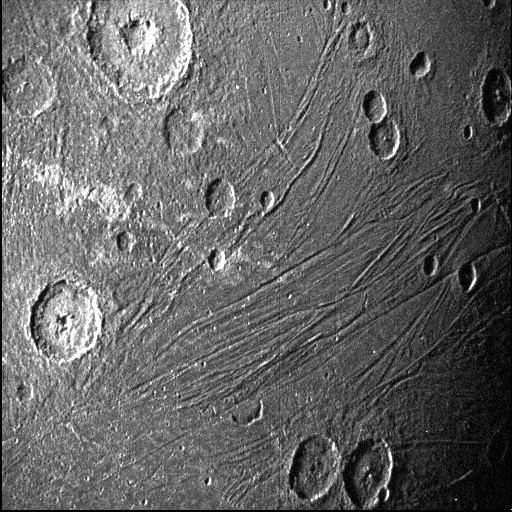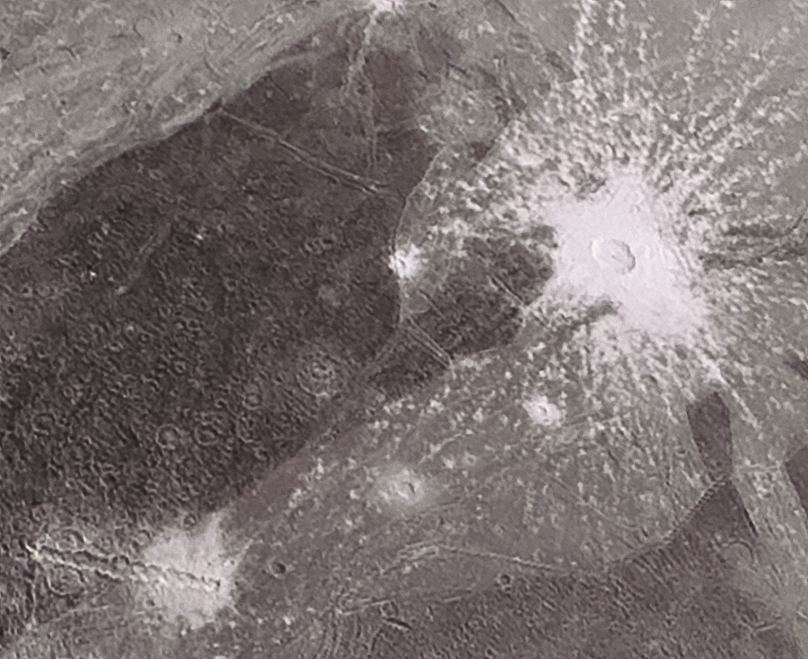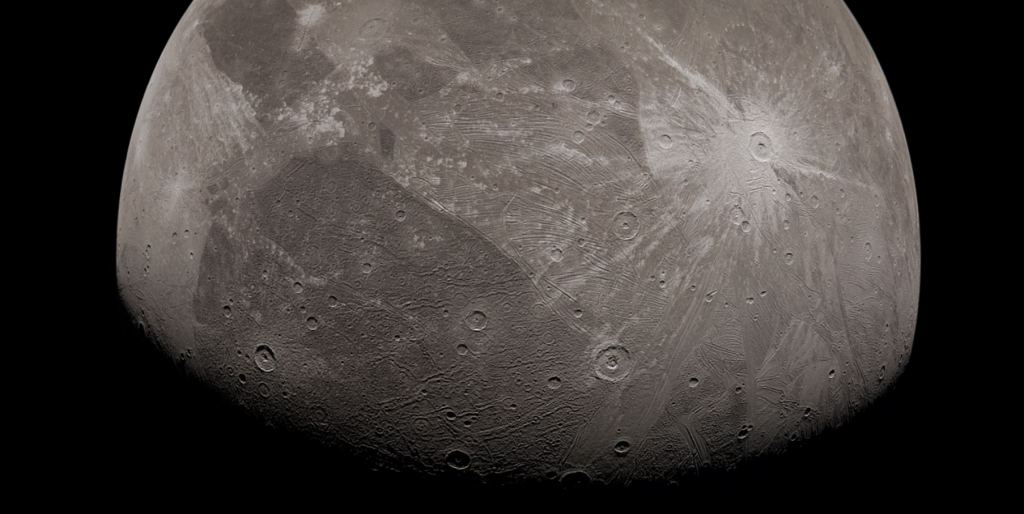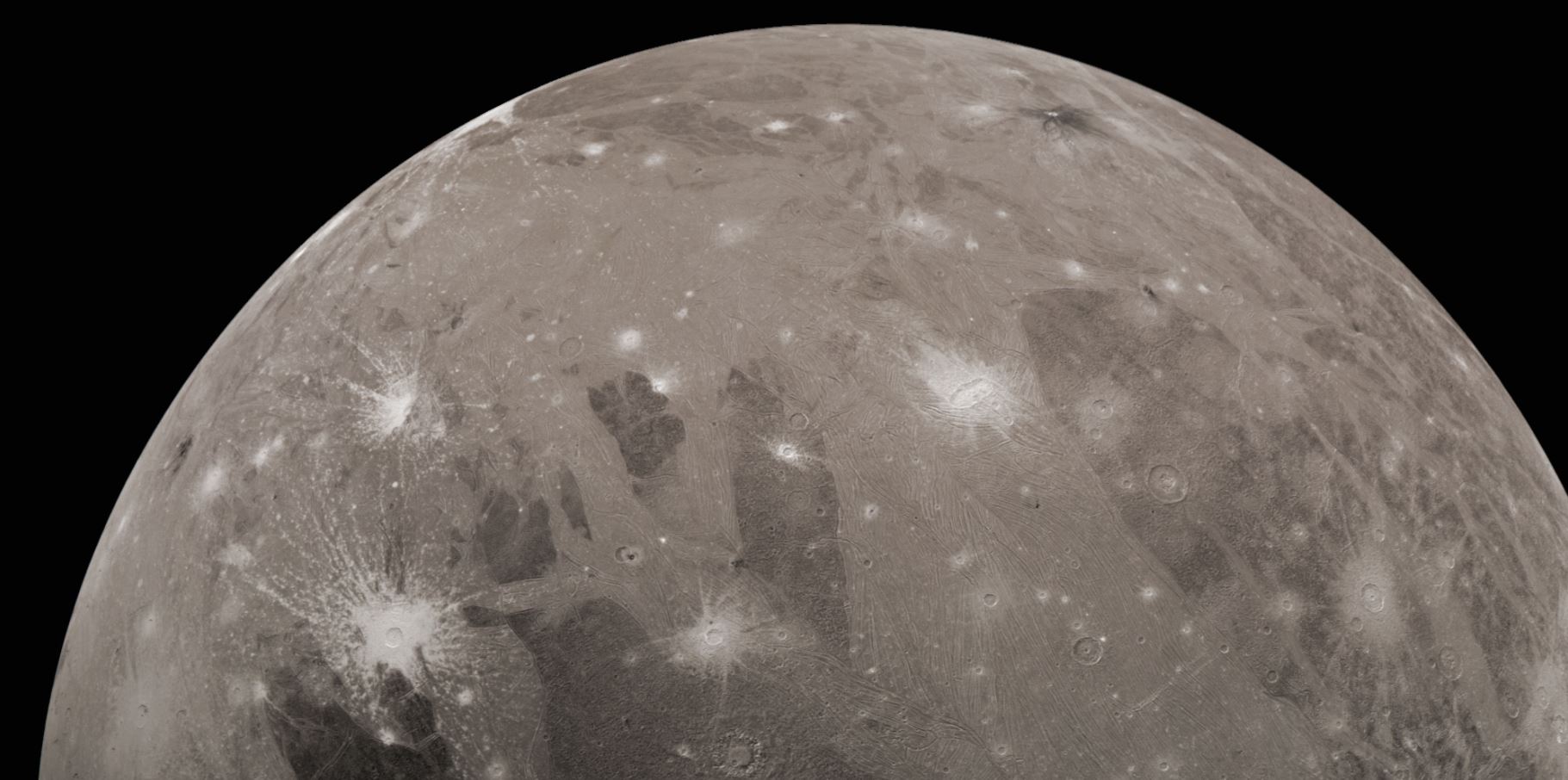Well, hello there old friend! This week the Juno mission to the Jupiter system made the first close flyby of Jupiter’s giant moon Ganymede, and as you might guess, the images are spectacular. This is the first time we’ve seen a close-up view of the Solar System’s largest moon since the Galileo mission 20 years ago. Voyager gave us the first views of Ganymede 40 years ago. Now, planetary scientists will be able observe any changes in Ganymede’s surface over time.
But first, the image editing gurus back on Earth are having a go at the raw images sent back by Juno. Our lead image comes from Gerald Eichstädt, who worked his magic to bring out the details of Ganymede, and it’s a stunner.
“This is the closest any spacecraft has come to this mammoth moon in a generation,” said Juno Principal Investigator Scott Bolton of the Southwest Research Institute, in a press release. “We are going to take our time before we draw any scientific conclusions, but until then we can simply marvel at this celestial wonder.”
The images were taken on June 7, 2021, as Juno swung past Ganymede. One image is from the Jupiter orbiter’s JunoCam imager and the other from its navigation camera, called the Stellar Reference Unit. Both images show the surface in remarkable detail, including craters, clearly distinct dark and bright terrain, and long structural features possibly linked to tectonic faults.

“The conditions in which we collected the dark side image of Ganymede were ideal for a low-light camera like our Stellar Reference Unit,” said Heidi Becker, Juno’s radiation monitoring lead at JPL. “So this is a different part of the surface than seen by JunoCam in direct sunlight. It will be fun to see what the two teams can piece together.”

Ganymede’s surface has numerous central pit craters, which are complex craters that either have depressions within their floors or central uplifts. While these craters come from impacts, the formation of these central pits — and why they look the way they do — is not well understood. But the high content of volatiles such as water ice in the moon’s crust likely plays a role.
Ganymede, at more than 5,150 km (3,200 miles) wide, is bigger than the planet Mercury and is the only moon large enough to generate its own magnetosphere — a bubble of magnetic fields that trap and deflect charged particles from the Sun. For size comparison, Earth is 12,740 km (7,917 miles) across and our Moon is 3,476 km (2,160 miles) wide.
This pass over Ganymede is the first in a series of flybys past Jupiter’s Galilean moons. This is part of Juno’s new extended mission. The probe’s primary mission, which began in 2016, focused on the gas giant itself. But now, Juno has been taking long, highly elliptical orbits around Jupiter, diving close in to collect data about the planet, before swinging way out again beyond the planet’s harmful radiation, which threatens the spacecraft’s hardware if it stays too long.
NASA says the spacecraft will send more images from its Ganymede flyby in the coming days, with JunoCam’s raw images being made available here. The “amateur” image editors are still working on the new images, so you may want to keep an eye on the newly processed images page here, and in particular, Gerald Eichstadt’s uploads to the Juno page, and Kevin Gill’s Flickr page.



“For size comparison, Earth is 12,740 km (7,917 miles) across and our Moon is 1,738 km (1,080 miles) wide.” The Moon’s radius is 1738 km so it is 3476 km (2,160 miles) wide.
Thanks. I thought that didn’t seem right.